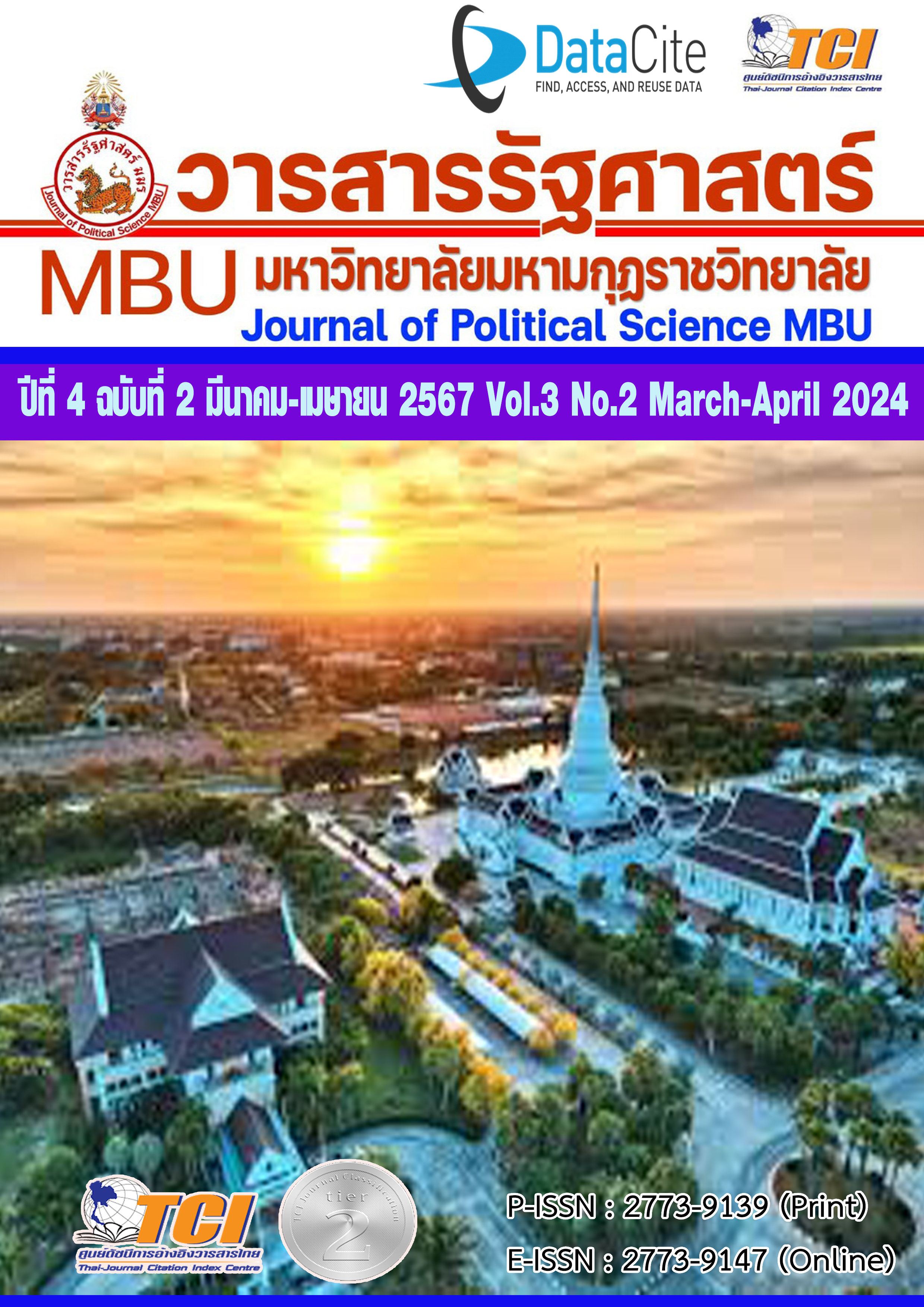ASSESSMENT OF INSTRUCTIONAL MANAGEMENT IN SPECIFIC GROUPS OF SOCIOLOGY AND ANTHROPOLOGY FACULTY OF SOCAIL SCIENCES MAHAMAKUT BUDDHIST UNIVERSITY
Main Article Content
Abstract
This research has the following objectives: 1) To Assessment the context, inputs, output processes, and impacts of the curriculum in terms of curriculum structure, content, and Concentration Coursein Sociology and Anthropology 2016 using the CIPP Model. 2) To find guidelines and suggestions for developing the sociology and anthropology curriculum. (Curriculum revised in 2021) It used quantitative and qualitative research methods to collect data from a Population or sampling of 38 people, classified as 8 teaching staff, 10 students, and 17 graduates, staff and academics from the Faculty of Social Sciences 3 people.
The research results found that: 1) In terms of context, most students and graduates who responded to the questionnaire had opinions about the curriculum objectives at a high level. Regarding the input factors, the course instructors provided appropriate advice for studying at a high level. In terms of process, there was a system to evaluate student progress and monitor development at a high level. In terms of productivity, the ability to perform work related to sociological and anthropological knowledge was at a high level. 2) Suggestions are divided into two issues. First Curriculum preparation should focus more on the application of information technology in teaching and learning, including increasing the skills of course instructors in using technology. It is appropriate to the subject matter taught and has a balance between theoretical concepts and practical aspects, such as research skills, to promote practical knowledge and skills in sociology and anthropology. It went hand in hand with promoting social skills. It includes creativity. There was good interaction with others, volunteerism, etc. Second Curriculum administration should promote the curriculum proactively and with more diversity by using online and offline media. It should, for example, be a public relations brochure and focus on teaching and learning that stimulates students' thinking processes, critical thinking, and social phenomena on an academic basis.
Article Details

This work is licensed under a Creative Commons Attribution-NonCommercial-NoDerivatives 4.0 International License.
References
กระทรวงศึกษาธิการ. (2544). หลักสูตรการศึกษาขั้นพื้นฐาน พุทธศักราช 2544. กรุงเทพมหานคร: องค์กรรับส่งสินค้าและพัสดุภัณฑ์.
จิรัญญา บุรีมาศ และชนาธิป สันติวงศ์. (2559). การประเมินหลักสูตรสาธารณสุขศาสตรบัณฑิต พ.ศ. 2553 คณะสาธารณสุขศาสตร์ มหาวิทยาลัยราชภัฏนครราชสีมา. วารสารราชพฤกษ์, 14(1), 53-59.
ชิษณพงศ์ ศรจันทร์ และคณะ. (2562). การประเมินผลหลักสูตรศึกษาศาสตรมหาบัณฑิต สาขาวิชาการบริหารการศึกษา (หลักสูตรปรับปรุง พ.ศ.2556) ของมหาวิทยาลัยมหามกุฏราชวิทยาลัย. วารสารบัณฑิตศึกษา มหาวิทยาลัยราชภัฏสกลนคร, 16(73), 88-97.
ทิพย์วรรณ สุขใจรุ่งวัฒนา และคณะ. (2565). การประเมินหลักสูตรศึกษาศาสตรมหาบัณฑิต สาขาวิชาพัฒนศึกษา (หลักสูตรปรับปรุง พ.ศ. 2561) คณะศึกษาศาสตร์ มหาวิทยาลัยศิลปากร. วารสารศิลปากรศึกษาศาสตร์วิจัย, 14(2), 63-78.
มาเรียม นิลพันธุ์ และคณะ. (2560). การประเมินหลักสูตรปรัชญาดุษฎีบัณฑิต สาขาวิชาหลักสูตรและการสอน (หลักสูตรปรับปรุง พ.ศ. 2556) คณะศึกษาศาสตร์ มหาวิทยาลัยศิลปากร. วารสารวิชาการ Veridian E-Journal, Silpakorn University สาขามนุษยศาสตร์ สังคมศาสตร์และศิลปะ, 10 (2), 1198-1216.
มาเรียม นิลพันธุ์. (2553). “การประเมินหลักสูตรที่เน้นการตัดสินใจโดยใช้วิธีเชิงระบบโดยใช้รูปแบบ CIPP Model”. คู่มือการประเมินหลักสูตรระดับบัณฑิต บัณฑิตวิทยาลัย. มหาวิทยาลัยศิลปากร.
วชิระ จันทราช. (2554). การประเมินหลักสูตรศึกษาศาสตรบัณฑิต สาขาวิชาภาษาอังกฤษ. นครปฐม: คณะศึกษาศาสตร์ มหาวิทยาลัยศิลปากร.
ศิริชัย กาญจนวาสี (2543). การประเมินการสอนระดับอุดมศึกษา. กรุงเทพมหานคร: ทบวงมหาวิทยาลัย สำนักมาตรฐานอุดมศึกษา.
สำนักงานคณะกรรมการการอุดมศึกษา (2557). คู่มือการประกันคุณภาพการศึกษาภายใน ระดับอุดมศึกษา พ.ศ. 2557.กรุงเทพมหานคร: ภาพพิมพ์.
Chomphun Kunchon at Ayuthaya. (1987). Documents relating to curriculum development. 2nd edition. Bangkok: Srinakharinwirot University.


